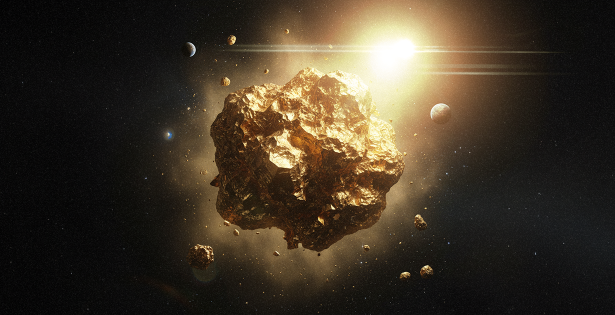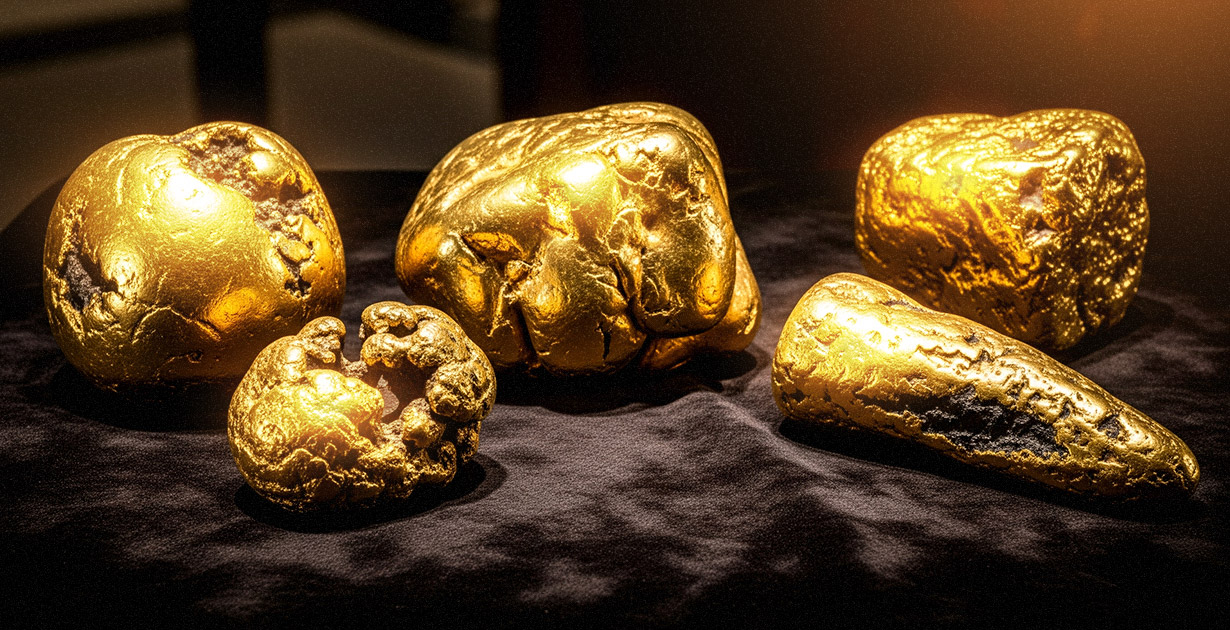
5 legendary gold nuggets of the 19th century
Incredible stories from the golden age of prospectors, when glittering giants seemed to call out to the calloused hands of miners themselves.
Nuggets are pieces of pure gold that were formed in a natural way. The most valuable native gold elements were found deep underground. If the weight of the gold finding exceeds 10 kilograms, then it is considered to be rare. As a rule, discovered gold nuggets are stored in private collections and state museums.
Let's talk in more detail about the largest gold nuggets ever found.
The “Holtermann Nugget”
Place of discovery: mine near Hill-End, Sydney, Australia
Year: 1872
Weight: approximately 93 kilograms of gold
This nugget is considered to be the largest ever found in the world. Yet in fact, the gigantic block was not made of pure gold. Gold was melted from a quartz plate. It had a length of 144 cm, a width of 66 cm and a thickness of 10 cm. The weight of the specimen block was just shy of 286 kg. The gold nugget was named after the gold miner Bernhardt Holtermann, who discovered the gold nugget in Australia at the end of the 19th century. The lucky man was mining gold-bearing pits for several years until he found the treasure, which brought him money and fame.
Afterward, the “Holtermann Nugget” was fragmented and melted down. Due to the fact that Holtermann was engaged in photography, we can see how the nugget actually looked.
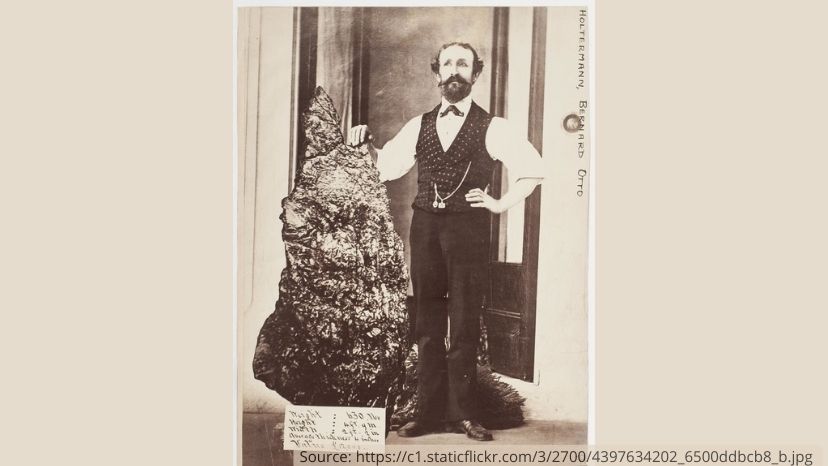
In the photo: Bernhardt Holtermann poses with the gold nugget.
“Welcome Stranger”
Place of discovery: the town of Moliagul, Victoria, Australia
Year: 1869
Weight: approximately 72 kilograms of gold
The second largest gold nugget was also found in Australia. It was discovered by prospectors John Deason and Richard Oates, 200 kilometers from Melbourne. One day, Dyson loosened the hard soil, and his pick suddenly hit something solid. He exclaimed: “I wish it was a nugget!” It was such a huge gold lump that it was impossible to move it. There were no suitable scales in the whole district to determine the value of the new-found object.
The nugget was crushed down gradually, chipped by bits and pieces within five hours. The “Welcome Stranger” was melted down, resulting in about 2270 ounces of pure gold — and that’s excluding around another pound’s worth of small bits and pieces Deason and Oates had given away to their kin and loved ones as keepsakes. Unfortunately, there’s no single photograph of the gold nugget.
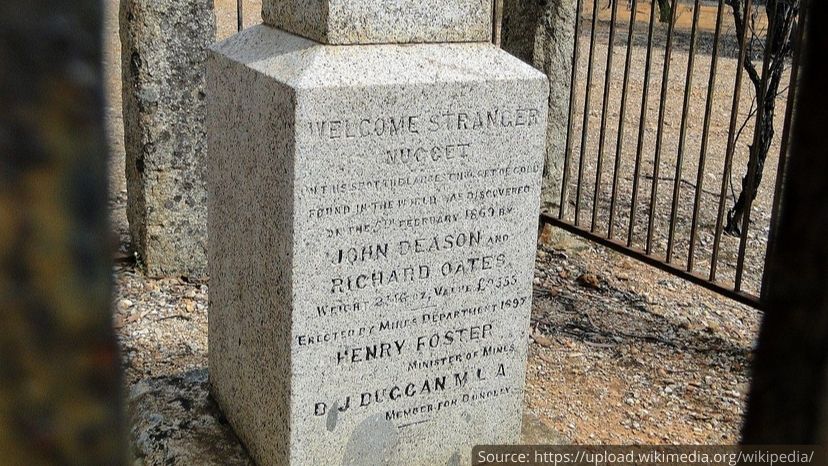
In the photo: There is a memorial pillar with the names of the two successful miners who earned 9,563 pounds, located in the very same place of the “Welcome Stranger” discovery.
The “Oliver Martin” gold nugget
Place of discovery: the foot of Grizzly Mountain, California, USA
Year: 1854
Weight: 36 kilograms
America is plentiful of gold deposits. During the season, the miners dig up to ten low-weight nuggets. It is an unprecedented success if one discovers a sizable piece of gold.
Perhaps the most famous gold nugget of the United States of America was found in California.
At night, two friends, both being three sheets to the wind, were returning from the bar. While in the mountain ranges, partners were caught in an unprecedented heavy rainfall. The rain caused a strong flood. The water that was cascading down the rocks washed friends away into the stream. Lucky Oliver managed to cling to the branches of trees and hold out until the morning, til the strong water flow stopped. But his partner John Fowler wasn’t that lucky, he drowned. The next day, Oliver Martin was digging a grave for his friend at the foot of the cliff. At a depth of two feet, he stumbled upon a piece of gold that was the size of a bull's head.
The nugget was named after the finder and was shown in various cities across America. Later, the gold “Oliver Martin” was sold at the auction for $22,700 dollars.
Long before discovering the native gold, Oliver Martin was hardly wealthier than a vagabond. Thanks to the discovery, he became extremely rich and invested in mining enterprises. Martin became an honorary philanthropist and died being a millionaire.
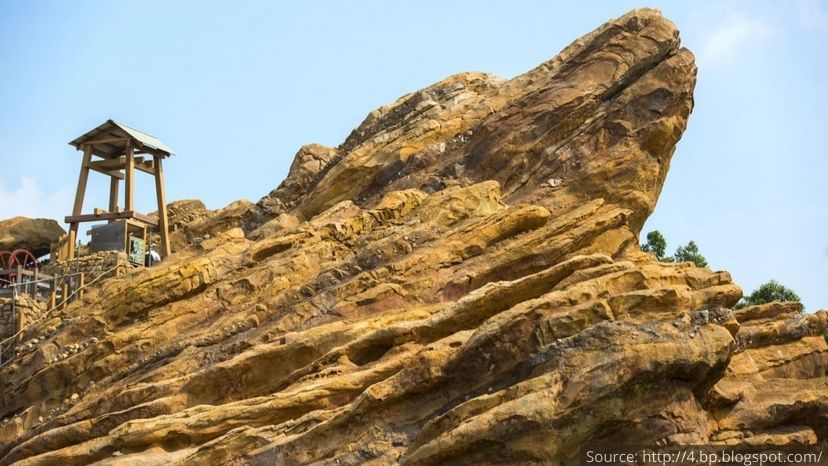
In the photo: Grizzly Mountain
An amusement park was built over the place where the Grizzly Mountain mine used to be back in the day.
Gold nugget from Sierra Nevada
Place of discovery: The Sierra Nevada mountain range, Nevada County, California, USA
Year: 1861
Weight: 29,5 kilograms of gold
A company of enthusiasts from St. Louis invested money in the mines, which did not arouse the interest of experienced gold seekers. Young people had very modest experience in gold mining, but had zeal and believed in success. They searched for native gold with the double force. One of the workers was a destitute Indian.
One evening he went to the creek to wash his working coveralls. The attention of the young gold seeker was captured by the brilliance he saw in the muddy water. He got himself into the water and saw a large shiny stone of unknown origin. The guy reacted to the discovered object without much interest: previously, he had never seen gold in bits larger than the size of a pinhead. The Indian did not suspect that native gold can be so large. He could not identify the metal, and so he called for the master’s help. An experienced person immediately identified a precious gold nugget.
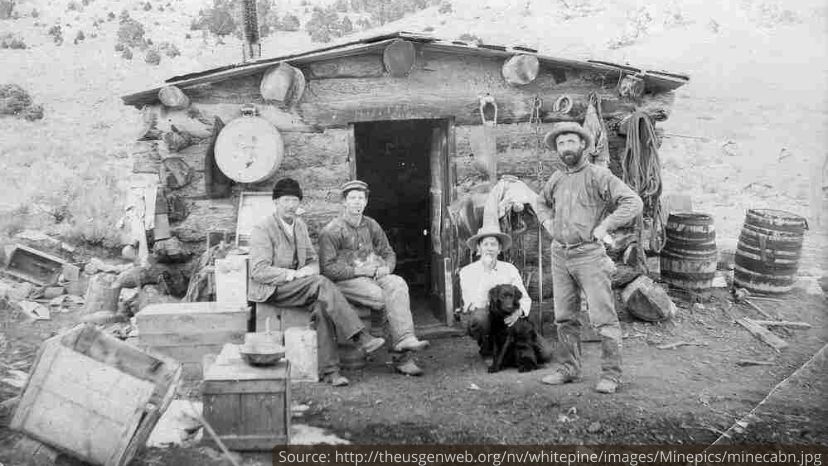
In the photo: gold miners of the Sierra Nevada,1860.
People from all over the country flocked to see a giant piece of gold. The enterprise of gold miners sold the nugget to Adams Express for $17,400 , paying each of its camp employees a bonus of $100. The Indian received another $300 extra for the discovery he made.
The discovered gold nugget is one of the largest nuggets ever found on the territory of America.
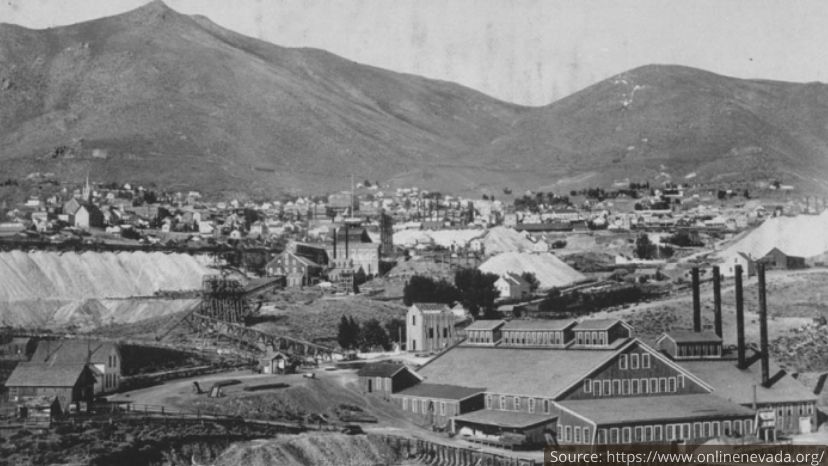
In the photo: Nevada County, California, 1850s.
The “Great Triangle”
Place of discovery: Tsarevo-Alexandrovsky placer, Chelyabinsk Region, Russia
Year: 1842
Weight: 36 kilograms of gold
The world’s largest collection of gold nuggets can be found in Russian museums. The largest gold nugget found in Russia was discovered in the Southern Urals. Nikifor Syutkin, a 17-year-old ore digger serf, found the native gold at a depth of around 3 meters. The young gold miner discovered the largest gold nugget in the history of the country. It was a dense golden block with the sides spanning 31 centimeters and 28 centimeters, and the base measuring 8 centimeters in width.
The nugget got its name because of its shape, which is similar to a geometric figure. The “Great Triangle” is known all over the world. This is the largest gold nugget which has been preserved in its original form (in other countries, gold nuggets of such a size are melted down.)
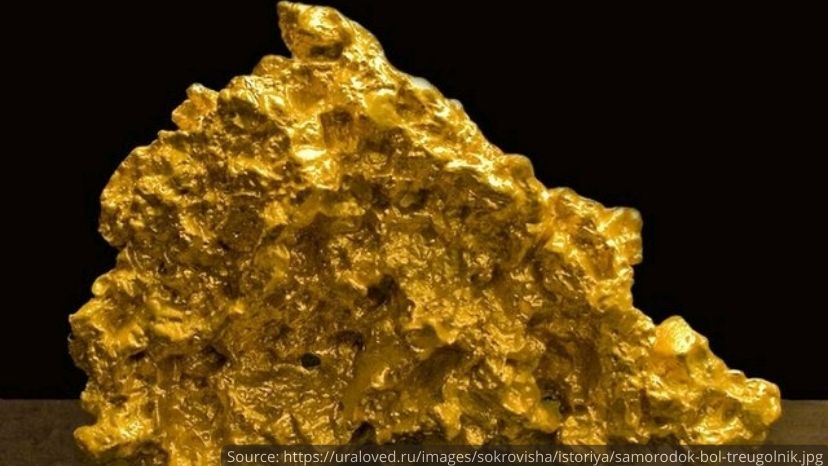
In the photo: the “Great Triangle” can be seen in the Moscow Kremlin Museum, a.k.a. the Diamond Fund.
For his discovery, Nikifor received, according to various sources, either 1,266.60 or even as much as 4,390 rubles, which, given the daily wage of 3 to 5 kopecks at the time, amounted to his earnings for about 70 years of labor with no days off whatsoever. Having also received his manumission for the find, he, as local historians claim, soon got married. Part of the money went toward coming into possession of a solid house that had enough room for both his retired craftsman father and for the newlyweds, as well as their children that weren’t long in the coming. Some sources say that by the early 1850s, the lucky prospector had around 2,000 rubles safely stored in a bank.
How many more precious gold nuggets may be found by lucky chance — only time will tell. And don’t think that people would come upon impressive slabs of the glittering metal only in the distant past. Find out how our fellow contemporary man added to the stockpile of humanity’s magnificent discoveries in the article “Hand of Faith”: how an Australian found a unique gold nugget”!



